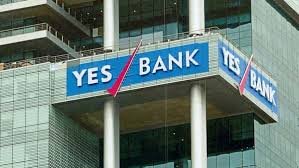
Yes Bank Ltd has been one of the most dramatic stories in the Indian financial and stock market landscape. Once a beacon of innovation and growth in the private banking sector, Yes Bank’s rise and subsequent near-collapse captivated investors and market watchers alike. Over the years, the bank’s journey has been marked by rapid expansion, allegations of mismanagement, a massive decline in stock value, and a government-backed rescue plan that fueled hopes of recovery.read more about Yes Bank Ltd stock market journey.
This blog delves deep into Yes Bank Ltd stock market journey, chronicling its highs, lows, and the path forward.
The Early Years: A Promising Start
1. Foundation and Vision
Yes Bank Ltd was founded in 2004 by Rana Kapoor and Ashok Kapur with the vision of creating a high-quality private bank catering to India’s growing financial needs. Positioned as a technology-driven, customer-centric bank, Yes Bank quickly carved a niche for itself.
2. Rapid Growth and Stock Market Debut
In 2005, Yes Bank went public with an Initial Public Offering (IPO) at ₹45 per share. The IPO was well-received, reflecting investor optimism about the bank’s potential. Over the next decade, Yes Bank emerged as one of the fastest-growing private banks, reporting impressive financial performance and gaining a reputation for its innovative services .Yes Bank Ltd stock market journey
3. Stellar Stock Performance
Between 2005 and 2018, Yes Bank’s stock price surged, reflecting the bank’s strong growth trajectory. By August 2018, the stock reached its all-time high of ₹404, a nearly 800% increase from its IPO price.
Challenges Begin: The Fall from Grace
1. Asset Quality Concerns
In 2018, cracks began to appear in Yes Bank’s façade. Concerns over its asset quality emerged, with allegations that the bank was underreporting its non-performing assets (NPAs).
2. Leadership Crisis
In September 2018, the Reserve Bank of India (RBI) declined to extend the tenure of co-founder Rana Kapoor as CEO, citing governance concerns. Kapoor’s departure marked the beginning of a leadership vacuum and a loss of investor confidence.
3. Regulatory Scrutiny and Downgrade
The RBI conducted multiple inspections, raising red flags over the bank’s governance practices and risk management policies. Credit rating agencies downgraded Yes Bank, further exacerbating its woes.
4. Stock Price Decline
By the end of 2019, Yes Bank’s stock price had plummeted to ₹50, erasing much of the wealth created for investors. The dramatic fall reflected the market’s loss of trust in the bank’s financial health.
The Crisis Deepens: Near Collapse
1. Liquidity Crunch
Yes Bank faced a severe liquidity crisis as depositors began withdrawing funds in large numbers. The bank struggled to raise fresh capital, pushing it to the brink of collapse.
2. March 2020: RBI Steps In
In March 2020, the RBI imposed a moratorium on Yes Bank, capping withdrawals at ₹50,000 per account to prevent a complete meltdown. The government and RBI intervened to rescue the bank, recognizing its systemic importance in the Indian banking sector.
3. Stock Hits Rock Bottom
During this period, Yes Bank’s stock price crashed to ₹5, its lowest level ever. Once a market darling, the bank had become a cautionary tale.
The Rescue Plan: A Glimmer of Hope
1. State Bank of India’s Role
The RBI and government crafted a bailout plan, with State Bank of India (SBI) taking the lead. SBI, along with other private banks, infused ₹10,000 crore into Yes Bank, acquiring a significant equity stake.
2. Leadership Overhaul
A new management team was installed, led by Prashant Kumar as the CEO. The leadership overhaul aimed to restore credibility and steer the bank toward recovery.
3. Stock Performance Post-Rescue
Following the bailout, Yes Bank’s stock showed some recovery, rising from ₹5 to ₹20 within months. However, the path to sustained growth remained uncertain.
Post-Crisis Recovery Efforts
1. Strengthening Balance Sheet
The new management focused on cleaning up the balance sheet, reducing bad loans, and provisioning for NPAs.
2. Capital Raising Initiatives
Yes Bank successfully raised capital through follow-on public offerings (FPOs) and qualified institutional placements (QIPs), improving its financial stability.
3. Focus on Core Banking Operations
The bank shifted its focus back to core banking activities, targeting retail and SME segments while reducing its exposure to risky corporate lending.
4. Digital Transformation
Yes Bank invested in digital banking solutions, aiming to leverage technology to attract customers and improve operational efficiency.
Stock Market Revival and Challenges Ahead
1. Gradual Recovery
By 2021, Yes Bank’s stock price hovered between ₹12 and ₹20. While far from its glory days, the gradual recovery signaled renewed investor confidence.
2. Challenges Persist
- High NPAs: Despite efforts, Yes Bank’s asset quality remains a concern.
- Competitive Pressure: The bank faces stiff competition from other private and public sector banks.
- Investor Skepticism: The scars of the 2019-2020 crisis continue to impact investor sentiment.
3. Market Sentiment
The stock remains a favorite among retail investors, who view it as a high-risk, high-reward opportunity. However, institutional investors have been cautious, awaiting more concrete signs of recovery.
Strategic Lessons from Yes Bank’s Journey
1. Governance is Crucial
Yes Bank’s crisis highlights the importance of strong governance and transparent financial reporting in building and sustaining investor trust.
2. Risk Management
The bank’s aggressive lending practices and poor risk management were key contributors to its downfall. Financial institutions must balance growth with caution.
3. The Role of Regulatory Oversight
The RBI’s intervention was critical in preventing a systemic crisis. Proactive regulatory oversight can help identify and address issues before they escalate.
Future Outlook for Yes Bank
1. Long Road to Recovery
Yes Bank has made significant progress under its new management, but the road to full recovery is long. Sustained profitability, improved asset quality, and customer retention will be crucial.
2. Opportunities in the Digital Space
The bank’s focus on digital transformation aligns with the broader trend of fintech adoption in India.
3. Investor Perspective
Yes Bank’s stock remains a speculative play, appealing to investors willing to bet on its turnaround story.
Conclusion
Yes Bank Ltd’s stock market journey is a cautionary tale of rapid growth, mismanagement, and resilience. From its meteoric rise to its near-collapse and subsequent rescue, the bank’s story underscores the importance of governance, risk management, and adaptability in a volatile industry.
For investors, Yes Bank represents both a lesson in the risks of unchecked growth and an example of the potential for recovery with the right strategy and leadership. As the bank continues its journey under new management, it remains a stock to watch, offering both opportunities and challenges in equal measure.





